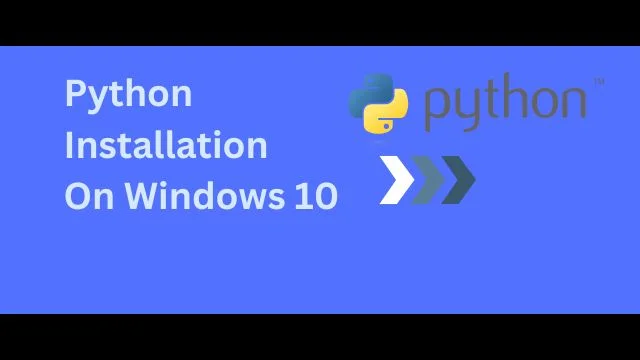Introduction to Python on Windows 10
Python is a powerful and versatile programming language, beloved by developers for its simplicity and robust library ecosystem. Setting it up on Windows 10 is straightforward, and doing so opens a world of possibilities for software development, data analysis, and more.
If you’re looking to start programming in Python on your PC, you’ll need to know How to Set Up Python Environment on Windows 10. This guide will walk you through the installation process step-by-step, ensuring you’re ready to code in no time. Whether you’re a beginner or an experienced developer, setting up Python correctly is crucial for a smooth development experience.
Requirements for Installing Python on Windows 10
Before installing Python, ensure your system meets the basic requirements. You’ll need:
– A PC with Windows 10 operating system.
– Administrator access to install software.
– An internet connection to download Python and related tools.
To install Python on a Windows 10 laptop, ensure you have:
- Windows 10 with the latest updates installed.
- 1 GHz or faster processor for optimal performance.
- At least 256MB of RAM, though 4GB is recommended.
- 1GB of free hard drive space for Python and additional packages.
- Administrator access to install software.
- Internet connection to download Python and any extra packages.
These basics will help you set up Python smoothly on your Windows 10 laptop.
Step-by-Step Guide to Installing Python
The installation process is simple, but following these steps will help you avoid common pitfalls and set up Python correctly on your Windows 10 machine.
Downloading Python
Visit the official Python website (python.org) and navigate to the “Downloads” section. Choose the latest version for Windows and download the executable installer. Here you have two options one for PC download and another one for Laptop download, you may choose according to your choice.
Running the Installer
Verifying the Installation
To ensure Python is installed correctly:
– Open Command Prompt and type `python –version`.
– You should see the Python version number if everything is set up correctly.
Setting Up Your Python Development Environment
After installing Python, configuring your environment is crucial for efficient workflow.
Configuring the PATH Variable
This step was partially handled during installation, but you can modify or verify the PATH variable manually through the System Environment Settings if needed.
Setting Up a Virtual Environment
Virtual environments allow you to manage separate package installations for different projects. To create a virtual environment:
– Open Command Prompt.
– Navigate to your project directory.
– Run `python -m venv myenv` where “myenv” is the name of your virtual environment.
Essential Tools and Packages for Python Development
With Python installed, several tools and packages can enhance your programming experience.
Using Pip to Manage Python Packages
Pip is Python’s package installer and is included by default. To use pip:
– Open Command Prompt.
– To install a package, type `pip install package_name`.
Popular Python Packages
For data analysis and scientific computing, consider installing:
NumPy: For numerical processing.
Pandas: For data manipulation and analysis.
Matplotlib: For creating static, interactive, and animated visualizations.
Testing Your Python Installation
Testing your setup ensures everything is configured correctly. Simple ways to test:
– Run a Python script that uses external packages.
– Try importing packages in a Python shell.
Troubleshooting Common Installation Issues
Encountering problems during installation is common. Common issues include:
– Python not recognized in Command Prompt: Ensure the PATH is set correctly.
– Errors during package installation: Check your internet connection or proxy settings.
Next Steps in Python Programming on Windows 10
With your Python environment ready, consider exploring:
– Python tutorials to build your coding skills.
– Advanced Python books for deeper knowledge.
– Online courses specific to your interests, like web development or data science.
Read More:
Understanding WordPress SEO Optimization:
Conclusion:
In conclusion, knowing how to set up a Python environment on Windows 10 is crucial for anyone interested in programming with this versatile language. By following the detailed steps provided in this guide, you can prepare your Windows 10 laptop for Python development efficiently and effectively. With your environment properly configured, you’re now ready to explore the vast possibilities that Python offers, from web development to data analysis. So, get started, and enjoy the journey into Python programming on Windows 10!

